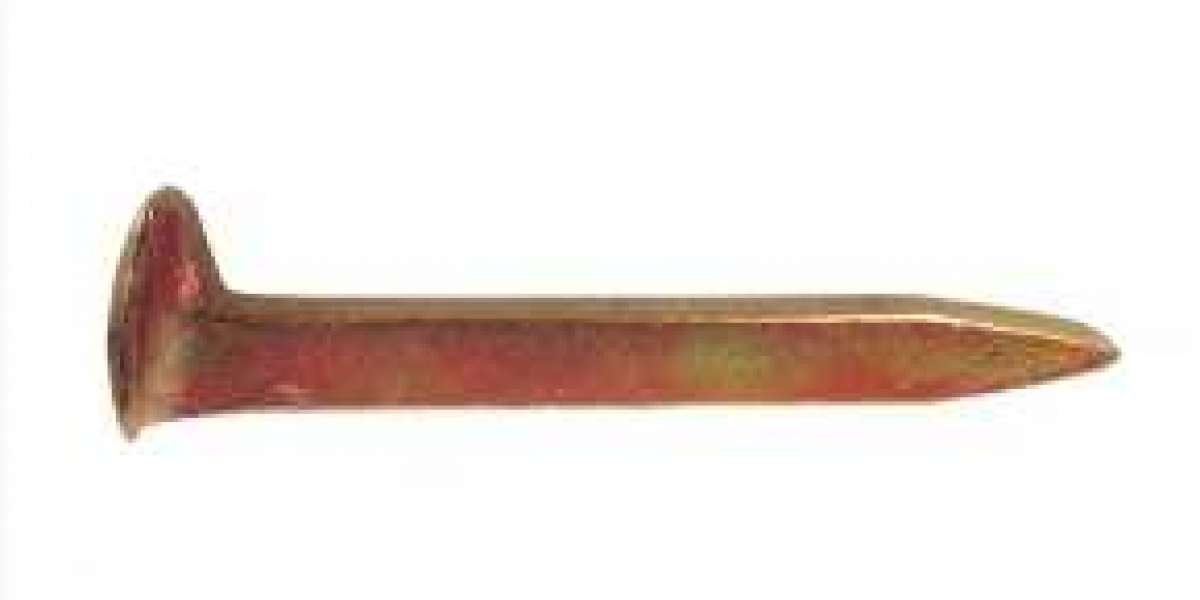Railway dog spikes play a crucial role in securing rails to wooden sleepers, ensuring the safety and stability of railway tracks. These specialized fasteners have been a fundamental component of rail infrastructure for decades, with their design and materials continually evolving to enhance durability and performance. Understanding the significance of railway dog spikes is essential for maintaining efficient and reliable train operations while prioritizing passenger safety.
Historical Significance of Dog Spikes in Railways
Origin
Dog spikes, also known as screw spikes, are essential components used in railway construction. These spikes have a rich history dating back to the early days of railroad development. Initially made from wrought iron, dog spikes were driven into wooden sleepers to secure rails firmly in place.
Dog spikes played a crucial role in the early expansion of railways by providing stability and strength to the tracks. As rail transportation evolved, so did the design and materials used for these spikes.
Evolution
The evolution of railway dog spikes has seen advancements in both material and design. From traditional wrought iron spikes, modern versions are now typically made from steel for increased durability and longevity. The shape and threading of dog spikes have also been refined over time for better grip and holding power.
The introduction of pre-drilled holes in railway sleepers revolutionized spike installation, making it more efficient and precise. This innovation significantly improved the overall safety and reliability of railway tracks.
Impact
Railway dog spikes have had a profound impact on the development and growth of railways worldwide. By securely fastening rails to sleepers, they ensure track stability under heavy loads and varying weather conditions. This reliability is vital for safe train operations and passenger transportation.
Moreover, the use of dog spikes has contributed to the longevity of railway infrastructure by minimizing wear-and-tear on tracks over time. This durability reduces maintenance costs while enhancing operational efficiency for rail companies.
Types and Sizes of Railway Spikes
Dog Spike Varieties
Dog spikes come in various types, each designed for specific purposes on railroads. Examples include cut spikes, screw spikes, and drive spikes. Cut spikes are commonly used to secure wooden rails to the base plates.
Screw spikes have threads that allow them to be screwed into place, providing a more secure fastening method compared to cut spikes. Drive spikes, on the other hand, are hammered into pre-drilled holes in the rail base.
Importance of Selecting Correct Size
Choosing the right size of railway dog spike is crucial for ensuring safety and durability of railroad tracks. The size of the spike must match the track size to provide adequate support and stability for trains passing over them.
Using incorrect sizes can lead to loose or unstable tracks, increasing the risk of derailments or accidents. For instance, using small-sized spikes on heavy-duty tracks can result in insufficient holding power, jeopardizing train operations.
Railway engineers carefully consider factors such as track gauge and material when selecting dog spike sizes to guarantee optimal performance and longevity of railroad infrastructure.
Dog Spikes vs Screw Spikes: A Comparison
Contrasting Features
Dog spikes are large nails used to secure rails to wooden sleepers, featuring a hexagon head, whereas screw spikes have a square head and threads that screw into the sleeper. Dog spikes are hammered in place, while screw spikes require tools for installation.
Dog spikes offer quick installation but can work loose over time. In contrast, screw spikes provide a more secure connection due to their threaded design but may take longer to install.
Advantages and Disadvantages
Dog spikes' main advantage lies in their ease of use on older wooden sleepers with pre-drilled holes. However, they tend to work loose under heavy traffic loads and require frequent maintenance. On the other hand, screw spikes excel in maintaining a tight grip on the rail, reducing maintenance needs despite being slower to install.
Pros of Dog Spikes:
Quick installation
Suitable for older wooden sleepers
Cons of Dog Spikes:
Prone to working loose
Requires frequent maintenance
Pros of Screw Spikes:
Secure connection
Reduced maintenance needs
Cons of Screw Spikes:
Slower installation process
Situations Where Dog Spikes Outperform Screw Spikes
In scenarios where speed is crucial or when dealing with existing infrastructure designed for dog spikes, such as historical railways or heritage lines utilizing wooden sleepers; dog spikes prove advantageous due to their compatibility and quick application.
For instance:
Heritage railway preservation projects often rely on dog spikes due to authenticity requirements.
Temporary track installations might prefer dog spikes for rapid deployment without specialized tools.
Materials Used in Railway Spike Manufacturing
Common Materials
Railway spikes are typically made from materials like steel and iron. These metals are chosen for their durability and strength under heavy loads. Steel spikes, in particular, are corrosion-resistant and can withstand the elements over time.
Iron spikes, on the other hand, offer cost-effectiveness while still providing adequate strength for railway tracks. Both materials undergo specific manufacturing processes to ensure they meet industry standards for quality and performance.
Properties and Considerations
Steel is favored for its high tensile strength, making it ideal for withstanding the pressure exerted by passing trains. Its resistance to corrosion ensures a longer lifespan without compromising structural integrity.
On the other hand, iron spikes are known for their malleability during production but may be more susceptible to rusting if not properly coated or maintained. When choosing between steel and iron spike manufacturing materials, factors such as track usage frequency, environmental conditions, and budget constraints must be considered.
Railway Dog Spikes have unique properties that make them essential components of rail infrastructure:
Durability under heavy loads
Corrosion resistance
Cost-effectiveness compared to other alternatives
Considering these aspects when selecting spike manufacturing materials ensures optimal performance and longevity of railway tracks.
Manufacturing Process of Railway Spikes
Production Steps
Railway dog spikes are crucial components used to secure rail tracks to their base. The manufacturing process of railway spikes involves several key steps. First, the raw materials, typically low carbon steel or other suitable alloys, are heated in a furnace until they reach the desired temperature for forging. Next, the hot metal is shaped into long bars through a process called extrusion.
Following this, the bars are cut into smaller sections of specific lengths that will eventually become individual railway spikes. These sections undergo further heating and shaping processes to form the iconic "dog" shape at one end and a pointed tip at the other. Once shaped correctly, these spikes are left to cool before undergoing surface treatments such as galvanization or coating to prevent corrosion when in use on rail tracks.
Technologies Involved
Various technologies play essential roles in manufacturing high-quality railway spikes. For instance, forging machines are used to shape and mold the heated metal into spike blanks efficiently. Heat treatment equipment ensures that the spikes achieve optimal hardness and durability properties required for withstanding heavy loads from passing trains.
Modern CNC (Computer Numerical Control) machines aid in precision cutting and shaping processes during spike production. These machines enable manufacturers to create uniform and standardized railway spikes consistently across large batches while minimizing material waste.
Quality Control Measures
During each stage of production, stringent quality control measures must be implemented to ensure that every railway spike meets industry standards for strength and reliability. This includes regular inspections of raw materials for any defects or impurities that could compromise spike integrity.
Furthermore, quality checks are conducted on finished spikes to verify dimensions accuracy, proper shaping of dog heads and tips, as well as surface finish quality post-treatment procedures like galvanization or coating application.
Quality Control in Railway Spike Production
Importance of Quality Assurance
Railway dog spikes play a crucial role in maintaining the integrity and safety of railway tracks. Quality assurance is vital to ensure that these spikes are durable, reliable, and able to withstand the heavy traffic loads passing over them daily. By implementing stringent quality control measures throughout the spike manufacturing process, companies can prevent accidents and ensure smooth railway operations.
Ensuring that railway spikes meet international standards for durability, strength, and finishing is essential. Companies must conduct thorough inspections at every stage of production to identify any defects or inconsistencies in materials or form. A professional team dedicated to quality control is necessary to uphold these standards and deliver high-quality spikes that meet industry requirements.
Testing Methods
Various testing methods are employed during railway spike production to guarantee their reliability under different conditions. These tests include assessing the spike's resistance to rust, its tensile strength, hardness, and overall durability. By subjecting spikes to rigorous testing procedures, manufacturers can identify any weaknesses early on and rectify them before the products reach the market.
One common method used in quality control for railway spikes is conducting metallographic examinations to analyze the internal structure of the spike material. This helps determine if there are any imperfections or inconsistencies that could compromise its performance over time. Non-destructive testing techniques such as ultrasonic testing can detect hidden flaws without damaging the spike itself.
Compliance Standards
Compliance with international standards is imperative in ensuring that railway spikes meet quality requirements set by regulatory bodies within the railway industry. Adhering to these standards not only guarantees product reliability but also enhances safety along rail sections where these spikes are installed. Manufacturers must stay updated on evolving compliance regulations related to spike production and make necessary adjustments accordingly.
Bullet list:
Importance of quality assurance for durability.
Various testing methods: resistance assessment.
Compliance with international standards ensures product reliability.
Installation and Maintenance of Dog Spikes
Installing Dog Spikes
Dog spikes are essential components in securing rail tracks. Proper installation is crucial to ensure the safety and stability of the railway system. To install dog spikes, begin by aligning the spike with the hole on the tie plate. Then, using a maul or hammer, drive the spike into place until it is firmly secured. It's important to make sure that each spike is driven in at the correct angle and depth to prevent loosening over time.
Align spike with hole on tie plate
Drive spike into place securely
Maintaining Spike Integrity Regular maintenance is key to ensuring that dog spikes remain effective. Best practices for maintaining spike integrity include inspecting them periodically for wear and tear, especially in high-stress areas where trains frequently pass. Checking for signs of corrosion or damage caused by environmental conditions such as moisture or extreme temperatures can help prolong the lifespan of the spikes.
Inspect periodically for wear
Check for signs of corrosion
Safety Measures
Safety should always be a top priority when working with railway dog spikes. Before starting any installation or maintenance work, it's crucial to wear appropriate protective gear such as gloves and safety goggles to prevent injuries from flying debris or sharp edges. Furthermore, ensuring that all tools are in good condition and used correctly can reduce accidents during spike installation.
Wear protective gear (gloves, goggles)
Fastening Power and Usage of Dog Spikes in Railways
Securing Rails to Sleepers
Dog spikes play a crucial role in securely fastening rails to sleepers. These sturdy spikes have a unique shape with two large, sharp points that penetrate the rail base and sleeper, ensuring a strong connection. By hammering these spikes into place, they prevent any lateral or longitudinal movement of the rail. This secure attachment is vital for maintaining the integrity and stability of railway tracks.
Railway dog spikes are typically made from durable materials like steel to withstand heavy loads and harsh environmental conditions. The design of these spikes allows them to resist loosening over time due to train vibrations or weather-related factors. Their reliable fastening power ensures that the rails remain firmly fixed in position on the sleepers, contributing to safe and efficient train operations.
Effective Applications in Railway Operations
Dog spikes are most effective in various applications within railway operations. They are commonly used during initial track construction or when replacing damaged or worn-out spikes during maintenance activities. These versatile spikes can be applied on both wooden and concrete sleepers across different types of railways, including mainline tracks, sidings, yards, and industrial lines.
One key advantage of using dog spikes is their ease of installation compared to other fastening systems like screws or clips. Their simplicity makes them cost-effective solutions for securing rails without compromising strength or durability. Dog spikes are preferred for curved sections of railway tracks where maintaining track alignment is essential for smooth train travel.
Cost Considerations for Railway Spikes
Factors Influencing Costs
Railway dog spikes costs are influenced by various factors, including the materials used and the size of the spikes. Different spike materials like steel, iron, or composite can impact prices significantly. Steel spikes tend to be more expensive due to their durability and strength compared to iron spikes. The size of the spike also plays a role in determining its cost; larger spikes generally cost more than smaller ones.
When considering costs for railway dog spikes, it's essential to factor in the traffic areas where these spikes will be installed. High-traffic areas might require more durable and higher-quality spikes, which could increase expenses. On the other hand, low-traffic areas may allow for more budget-friendly options without compromising safety or reliability.
Comparing Spike Materials and Sizes
Steel railway dog spikes, although pricier than iron ones, offer longevity and robustness that can result in long-term cost savings by reducing maintenance needs. Iron spikes are typically cheaper but may wear out faster in high-traffic locations, leading to more frequent replacements and potentially higher overall costs.
In terms of sizes, larger railway dog spikes usually come with a heftier price tag due to increased material usage during manufacturing. However, they provide better anchorage strength and stability compared to smaller spikes. It's crucial to balance initial costs with long-term benefits when selecting the appropriate size based on specific rail requirements.
Strategies for Cost Optimization
To optimize railway dog spike costs while maintaining quality standards, consider bulk purchasing from reputable suppliers offering discounts for large orders. Conducting regular inspections and maintenance can prolong spike lifespan and reduce replacement frequency, ultimately cutting down overall expenses over time.
Pros:
Steel dog spikes offer durability despite being costly.
Opting for larger sizes provides enhanced anchorage strength.
Regular maintenance helps extend spike lifespan.
Cons:
Initial investment in steel or larger-sized spikes may be higher.
Final Remarks
The historical significance, types, manufacturing process, and installation of railway dog spikes have been explored in-depth. Understanding the materials used, quality control measures, and cost considerations provides a comprehensive view of these crucial components in railway construction. Dog spikes offer robust fastening power and are essential for maintaining the integrity and safety of rail tracks. As you delve into the world of railway spikes, remember the meticulous craftsmanship and engineering precision that go into their production.
Explore further into the realm of railway infrastructure to appreciate the intricate details that ensure safe and efficient train travel. Stay informed about advancements in railway spike technology and contribute to the ongoing dialogue surrounding railway maintenance and development.
Frequently Asked Questions
What is the historical significance of dog spikes in railways?
Dog spikes, also known as track bolts, have been crucial in securing rails to wooden sleepers since the early days of railroads. They played a key role in ensuring the safety and stability of railway tracks during the expansion of railway networks.
How do dog spikes differ from screw spikes?
Dog spikes are driven into wooden sleepers by hammering, providing strong lateral support to rails. In contrast, screw spikes are twisted into metal or concrete sleepers using a wrench. Dog spikes offer simplicity and reliability but may require more maintenance compared to screw spikes.
What materials are commonly used in manufacturing railway spikes?
Railway spikes are typically made from high-carbon steel due to its durability and strength properties. This material ensures that the spike can withstand heavy loads and maintain track integrity over long periods of time.
Why is quality control important in railway spike production?
Quality control measures ensure that each railway spike meets industry standards for strength, durability, and performance. By adhering to strict quality checks throughout manufacturing processes, rail operators can rely on these components for safe and efficient train operations.
How are dog spikes installed and maintained on railways?
Dog spikes are installed by driving them through holes on base plates into wooden sleepers using a spike maul or sledgehammer. Regular inspections for wear, corrosion, or loosening should be conducted to maintain proper fastening power between rails and sleepers.








